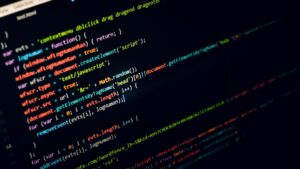Every now and then, the internet births a word that sparks curiosity before anyone can really pin down what it means. In 2025, that word is Zvodeps.
You may have seen it sprinkled into tech think-pieces, peppered across obscure subreddit threads, or mentioned casually in offbeat blog posts. Some called it a product, others a concept, and a few insisted it was just a well-orchestrated marketing stunt.
Yet, by the time summer hit, Zvodeps was firmly rooted in the digital zeitgeist — and everyone was asking the same question:
What exactly is Zvodeps?
Zvodeps – A Term Without a Clear Origin
Where Did It Come From?
According to most online timelines, the first recorded use of “Zvodep’s” appeared around May 2025, in a short blog post reviewing a closed-beta productivity tool. The post wasn’t widely circulated at the time, but it used the phrase “Zvodeps architecture” in a context that assumed readers knew what it meant.
Shortly afterward, forum users on Hacker News and Mastodon began asking about Zvodep’s — was it a framework? A protocol? A state of mind?
It didn’t take long for the term to spread into design circles, AI discussions, and speculative tech fiction, gaining momentum without gaining definition.
So, What Does Zvodeps Actually Mean?
That’s the million-dollar question. Here are the three dominant interpretations floating around in the community:
1. Zvodeps as a Mindset
Some claim Zvodeps is not a product but a philosophy — an approach to modern digital systems. In this interpretation, Zvodeps is about:
- Non-linear system thinking
- Decentralized creativity
- Meta-product layering
Supporters of this definition see Zvodeps as the “next wave of software logic”, where platforms no longer serve fixed purposes but morph based on user intent.
2. Zvodeps as a Tool or Framework
Others are more grounded, believing Zvodep’s refers to a closed-source framework or suite being quietly developed by a stealth startup (or possibly a collective). This theory is supported by GitHub gists and Figma prototypes labeled “ZvodepsCore” and “ZVD v0.1.”
Rumors suggest it’s:
- A modular AI orchestration layer
- Designed for multi-agent collaboration
- Built for use in edge computing environments
Some leaked descriptions reference prompt choreography, stateful UI regeneration, and “autonomous UX scaffolding.” If that sounds cryptic — that’s the point.
3. Zvodeps as an ARG (Alternate Reality Game)
A third group thinks Zvodeps is an elaborate digital art project or alternate reality game (ARG). Cryptic websites, stylized glitch graphics, and AI-generated lore pages point toward a gamified mystery, possibly intended to challenge how we define meaning in the age of LLMs and synthetic content.
To these users, Zvodeps is meant to resist definition — it’s a mirror to our hunger for clarity in a chaotic digital world.
Common Features Associated with Zvodeps
Even though the term is nebulous, certain characteristics have become repeatedly associated with Zvodep’s-related content:
Modular by Nature
Anything Zvodeps-inspired is often modular — whether in design systems, tools, or workflows. There’s an emphasis on plug-and-play architecture that adapts in real time.
AI-Native
Zvodeps isn’t just compatible with AI — it’s built for it. Discussions around Zvodep’s often include terms like:
- Autonomous agents
- Prompt flow orchestration
- AI-enhanced intuition loops
It’s seen as a bridge between human intent and machine execution.
Decentralized Infrastructure
Whether real or fictional, Zvodeps is always described as decentralized — cloud-agnostic, peer-to-peer ready, and edge-compatible.
Anti-Static UX
User experiences described as “Zvodepsian” are fluid, non-linear, and often adapt based on behavioral cues. Some even speculate on interfaces that change based on emotional input.
Why Zvodeps Is Gaining Attention in 2025
The rise of Zvodeps isn’t just about the word — it reflects broader shifts in tech and culture:
The End of Single-Purpose Software
People are tired of rigid software that solves only one problem. Zvodep’s — as a mindset or tool — reflects a growing interest in multi-layered digital environments.
AI-Oriented Workflows Need New Systems
As AI tools become more autonomous, there’s a need for new orchestration frameworks. Zvodeps may be emerging as a response to this — offering a way to build, organize, and adapt AI agents dynamically.
Mystery as Marketing
Let’s be honest: part of Zvodeps’ rise is because nobody knows what it is. That mystery becomes an engine for engagement, drawing people in to speculate, remix, and reimagine the concept.
Zvodeps in Practice — Real or Vaporware?
As of now, no official Zvodeps product has launched — but that hasn’t stopped people from building their own interpretations.
Examples seen online include:
- A Notion dashboard called ZvodepsOS mimicking adaptive workflows
- A GitHub repo titled Zvodeps-CLI that acts like a “narrative task runner”
- Digital artists tagging glitch-core visuals with #Zvodep’s
- AI prompt engineers designing “Zvodeps flows” to choreograph LLM output
In a way, the lack of official definition is part of the appeal — Zvodeps is open to being defined by its community.
Future of Zvodeps – What’s Next?
1. Official Launch or Reveal
Many believe Zvodeps will eventually be revealed as a startup, toolkit, or AI service currently in stealth mode. If true, the buzz is already working.
2. Zvodeps as a Movement
Some predict Zvodep’s will evolve into a creative movement — much like vaporwave or net art. Its themes of fluid design, ambiguous utility, and post-linear logic resonate deeply with digitally native creatives.
3. Open-Source Expansion
If the community continues building around it, Zvodeps could become a modular protocol or design language — like a cross between a UX kit and a low-code AI studio.
Final Thoughts
Zvodeps is the kind of term that doesn’t wait for permission to exist. It grows by curiosity, spreads by ambiguity, and adapts to fit the user. Whether it’s a product in stealth, a digital art experiment, or a manifestation of tech’s collective imagination, Zvodep’s reflects something bigger:
A world where tools aren’t just used — they are interpreted.
You don’t have to understand Zvodeps fully to participate. In fact, the point might be that no one does — and that’s what makes it so very 2025.




